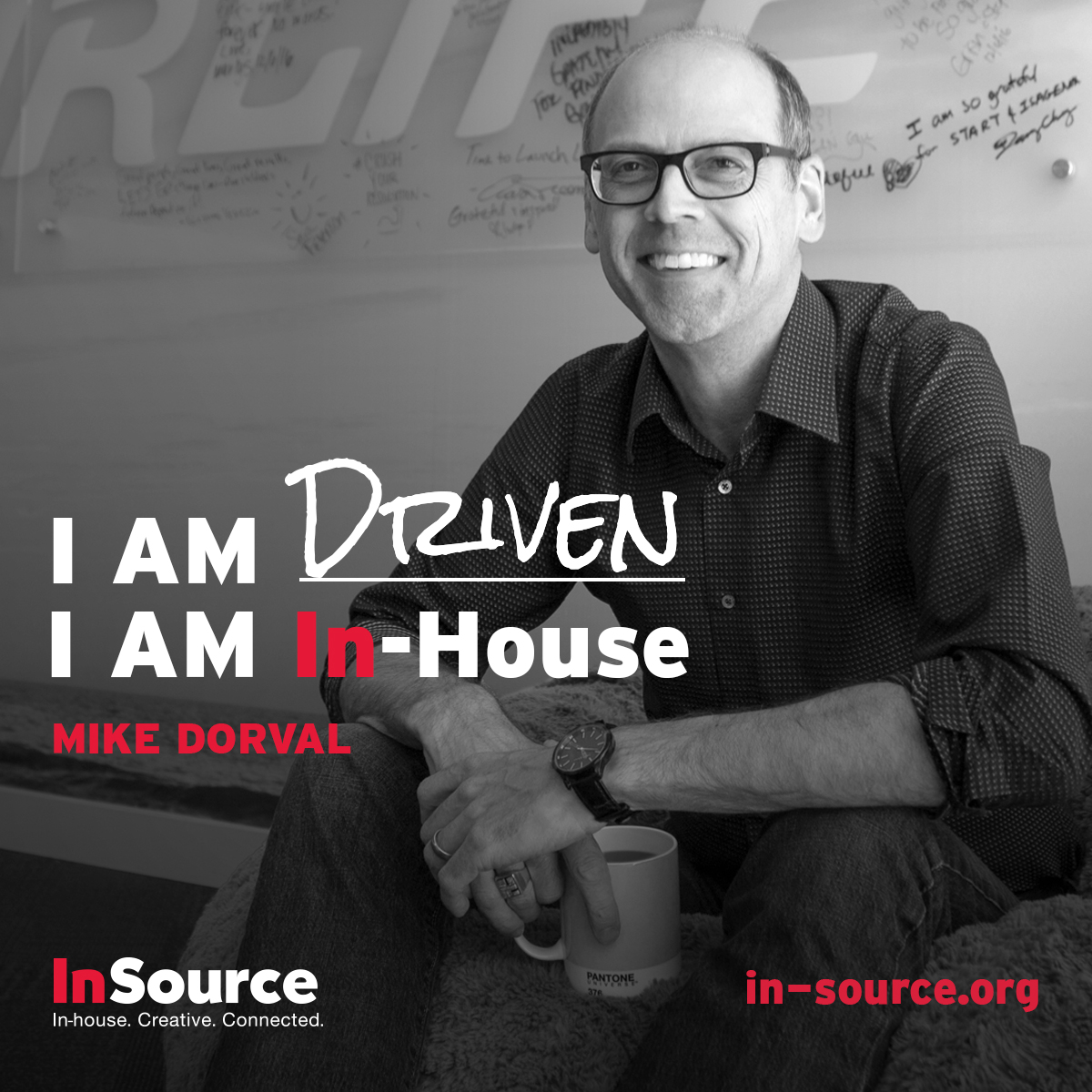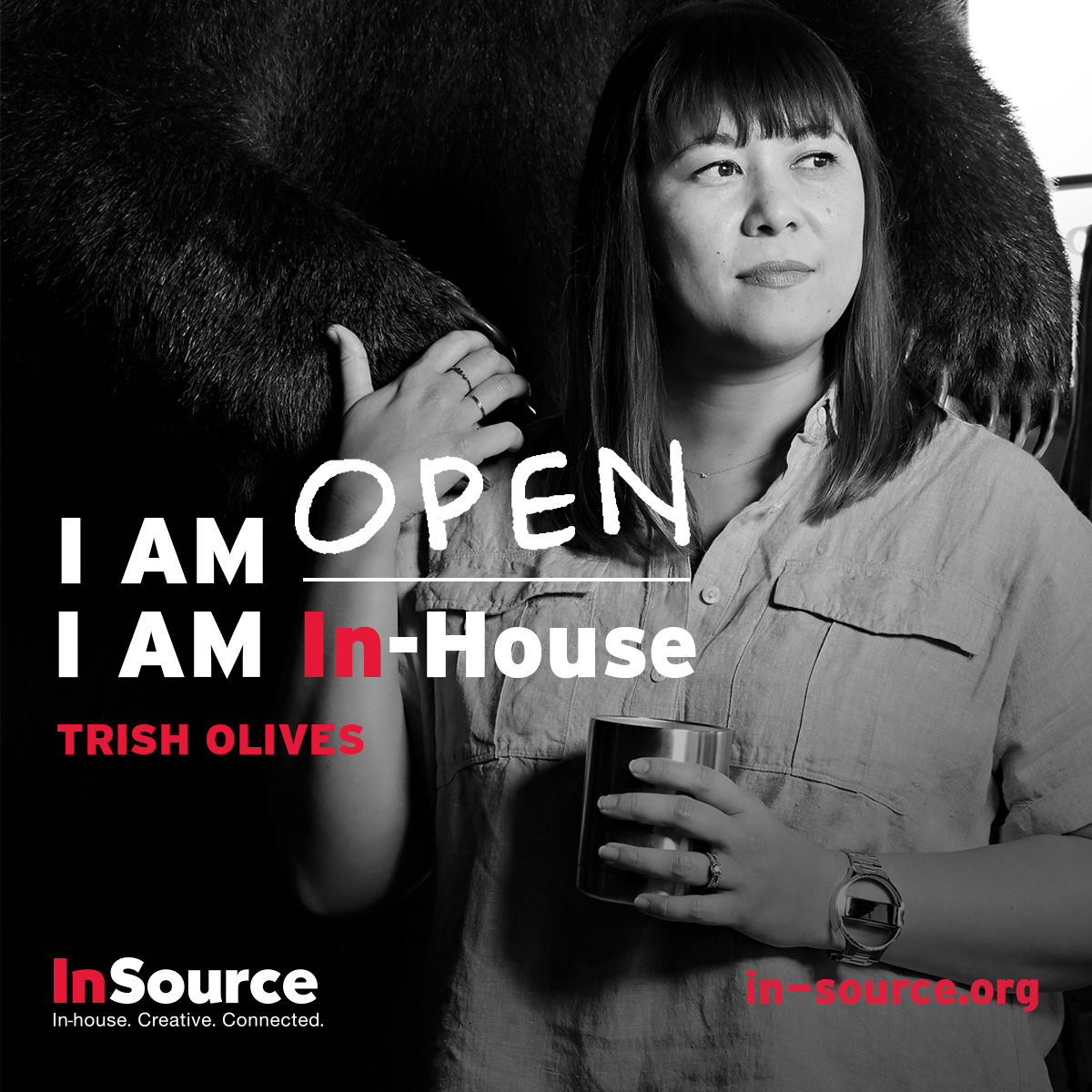Doug Richards
Educational Consultant (Multimedia Designer/Developer)
Company Name: Sprint
-
What type of product or service does your company produce/provide?
Sprint is a globally recognized telecommunications company. We develop and deliver cutting-edge technology that makes our customers’ lives easier. Sprint is at the forefront of integrating long distance, local and wireless communications services, and one of the largest carriers of Internet traffic.
-
How large is your company? (number of employees)
70,000 +
-
How large is your department?
The University of Excellence (UE), a segment of HR, is an organization of 500 plus educators, developers, instructional designers, project managers, software engineers, application developers, and multimedia designers and developers. The UE Multimedia Team currently has 29 full-time developers and designers on staff with three direct personnel managers and a group manager.
-
Your Path:
Many in-house directors we’ve spoken with have come to their positions through an amazingly wide variety of paths the following questions are designed to give readers a view of your route to your current position.
-
What area did you major in at college?
When I presented at this years (2003) HOW Design Conference at the end of my first session I stepped off-stage to meet and greet members of the audience and allow for more personalized questions and answers. As the crowd thinned down to the final six or seven attendees a design student from New York asked me, with more confusion than awe, how it was possible that I’ve been able to become such a successful designer without ever earning a design degree.
For me, it was a combination of blind luck and determination. I’ve always been involved with the arts in some form or another. Initially my focus was writing and that morphed into music and then along the way I picked up a glue stick and a silkscreen kit as a means to promote my own work. My work became well known in the community and after a few years of learning to design the hard way I was offered a job as a full-time designer. It was a responsibility I took (and still do) very seriously so through many long nights of research and self-education I finally arrived at a point in my life where I realized that I had found a career. It’s not a path I would recommend to a young designer but one that worked well, so far at least, for me.
-
Have you sought additional training to improve your design/management skills? If so please describe it.
I daily train myself in new skills. A large part of the strength of my design lies in being technically savvy since the majority of the products I create are interactive. The training may be self-paced, books, articles, testing new methods of development, and this approach is largely driven by the needs of my products. I also make an effort to earn at least one certification a year, mostly through interactive training courses offered online. I also teach as often as I can because I firmly believe that to gain true understanding of anything the best way to learn is to teach.
-
Please describe the path that has brought you to your present position. What was the biggest challenge you faced during that process? What advice would you offer to other design directors based on this experience?
The path I’ve traveled to get to my current position is a long and seemingly random road. Prior to becoming a Designer (not just a designer) I pursued a number of career paths. I was an amateur rock-star, a spoken word artist, a chef, a bouncer, a bartender, an English teacher, a radio personality, and a teacher of disabled adults. And sadly that’s not even the entirety of the positions I’ve held in my life (it’ important to note here that I’m only 35 though I often speak like life has long gone by). Design was something that I often did on the side during those many changing’s of the life hat and always something I came back to eventually. The most difficult part of the process for me was learning to trust myself and my work and finally admitting that I could pursue both my passion and a paycheck and find a balance between the two.
In the past when I’ve hired designers either to work for me or work with me I’ve caught myself being prejudiced against applicants that have never had any life experience beyond school and apprenticeships. I think the caution here is that all too often we are led to believe that dedication to a single path is a positive. I’ve found that the more someone knows about life the better they are as a designer because they understand the needs of different businesses. Additionally I think an element of risk is a core driver of the design process. If an individual is unable or unwilling to take risks in their own lives I have to wonder if they will be able to in their work.
-
The Job:
Here’s the chance for other directors to get a glimpse of both the ridiculous and the sublime side of your professional experience – the war stories…
-
To whom do you report? (Sales, Marketing, Operations etc.) In your opinion is this the best organizational structure to ensure you and your department’s effectiveness within your company?
The University of Excellence (UE) is a segment of the Corporate Staff division. All of the segments of Corporate Staff are focused on improving human performance. This alignment allows the UE to support the entire enterprise and is highly effective.
-
What is the most difficult aspect of your job?
The most frustrating thing for me about working for a large corporation is the uncanny knack people have for making a complex problem out of a simple one. It never ceases to amaze or frustrate me.
I’m a firm believer that the most under-utilized skill of a good designer is critical thinking. It’s in our nature and our training to be problem-solvers. All to often though corporate politics come into play and our solutions and recommendations are sacrificed for personal goals. This is especially true when customers come to the table with a preconceived notion of what they need and are unable to discern the difference between what they ‘need’ and what they want. This makes our job more difficult because when then get into the justification game where every idea needs to be endlessly justified to the nth degree.
There’s really no way to politely tell someone that their solution is wrong but I’ve learned the hard way that for the sake of the business you may have to step on some toes. If the customer insists on making the solution too complex it is our responsibility as fiscal stewards of the company to escalate that problem. The de facto answer of ‘just make the customer happy’ should not be applied to situation that impact the companies’ finances or put the corporation at risk (a specific instance, being told to use images we don’t have ownership of). The only ethical solution is to be firm in what you believe is right. As designers we are the experts and we should expect our management and peers to support our decisions as long as they are firmly based in fact and good business sense.
-
What area is the most rewarding?
A simple answer, it’s the ability to be able to work with the latest and greatest technologies. The real advantage of being a corporate in-house designer is the ability to invest in the software and equipment to get the job done right. Of course, in these down times procurement is often a struggle but for the most part we are able to stay ahead of the curve.
-
What was the biggest challenge you’ve faced as an in-house design director and how did you overcome it?
Since I’m not currently a design director I can only comment on the hurdles I face as an in-house designer. In this context I would say that the biggest challenge I have as a designer in the trenches would be earning the trust and respect of my management to allow me to do what I know is best. Unfortunately I can’t actually admit to having overcome that, although I will admit to having made headway. This is an issue that comes from non-creatives attempting to manage creatives more than anything else.
-
Creating Respect and Opportunities for Your Team:
Probably the single biggest topic that comes up in conversations among design directors is the respect, or lack of, that their in-house teams get from other departments and upper management. Your experiences and strategies for dealing with this issue will help others define and act on their situations regarding this issue.
-
Do you feel your department is respected and valued by others in your company? If so, how have you accomplished this and what advice would you offer other design directors?
In some ways, yes, we have earned the respect of our company. We’ve earned this respect by consistently providing higher quality solutions that are less expensive than a vendors’. This of course appeals to the executive level since we are a cost savings rather than a cost outlay. It should be noted though that beyond the fiscal we’ve struggled with convincing even our closest peers that what we do is far beyond simply making pretty pictures. I also suspect that our IT department hates us because every time they set a new standard we’re knocking on the door demanding that they support our latest technologies.
I’m convinced that respect is where you find it in the corporate world. It’s not easily given and almost impossible to earn but as long as you continue to do your job as best you can, and even better than that, you will eventually earn yours.
-
Are you involved in your corporation’s strategic initiatives? If so how did that come about and does it work successfully for you?
For the most part strategic initiatives are set above my head but occasionally my opinion is sought out for input on various technology issues.
-
How do you manage your relationships with your peers in other departments and with upper management?
Corporations have a tendency to create pockets of safety for dead weight. At some point we’ve all looked at our peers and management and questioned what value they add to the company. This is especially true with upper management that seems to spend all their time in meetings and yet still have ownership over nothing. When it comes to managing those relationships it’s best to keep a professional distance. Those individuals have a tendency to start a lot of work without following through to a result. This is not only frustrating but potentially damaging to your career as well.
Unfortunately as in-house designers we don’t have the luxury of choosing our customers like and outside agency does. It’s true in any business that at some point you’re going to work with individuals you don’t like on a personal level. It’s also true that you will be fortunate enough to make some very good friends along the way. I try to manage both sides of the equation by approaching every opportunity as a chance to learn.
-
Does your company work with outside design firms and ad agencies? If so how would you characterize your relationship with them? What work-with strategies have you employed to ensure a successful relationship?
Yes, we maintain a number of external contracts with outside agencies but that occurs at a level I have no contact with.
-
Your Staff:
Management was not necessarily a topic covered in many design directors ‘ educations. Communicating your strategies and practices in this area will be of great value to your peers.
-
What is the single biggest challenge you face regarding your staff?
The single biggest challenge facing our team is the huge gaps in skill sets. As shocking as it is I work with individuals who have yet to even learn how to use Photoshop much less the tens of other skills required to earn the title Multimedia developer. A large part of our team is made up of individuals that just kind of ‘fell into’ their current role. They’ve never studied design but worse yet they’ve never made the effort to actually learn the skills needed to do their job.
Because we produce highly interactive products the unfortunate, yet predictable, side effect of this is that a few talented individuals are tasked with creating the majority of the work. Because of this critical areas of the final product often suffer, sometimes it’s the visual elements, other times it’s the functionality or usability.
This occurs because of the way we are aligned. Projects are assigned based on availability not by the skill-set required to create the best product. There is a level of very un-healthy competition on our team that drives people to attempt to develop solutions with technologies they have no understanding of. Rather than admitting to a weakness or a skill gap our peers resort to re-purposing designs found on open source sites and claiming them as their own. Unfortunately since they don’t understand the technology to begin with they produce half-baked products that usually require more time to fix than they did to develop.
This problem is compounded by the fact that even though we are a training organization we ourselves are not empowered to pursue the training we need as often as we need it. As every designer knows to stay in the game you must increase your skill set through training as often as possible. Since we’re not allowed the time to get formal training we often times are forced to build the time into projects, which delays the project and impacts it’s timeliness.
-
Do you have adequate staff to service your company effectively?
The UE is in the process of absorbing all the training organizations throughout the enterprise, increasing the Multimedia team to 50+ developers. In a perfect world that number should be adequate but again, because of the large gaps in our skill sets we still feel understaffed.
-
What methods do you use to keep your staff motivated?
Since I personally don’t have any direct reports motivating the staff is primarily a management issue. Although I do try to support this effort by managing a Macromedia Corporate Champions group that meets once a month to educate our developers on the Macromedia suite of tools. This also gives us time to discuss the issues that directly impact our work. Plus Macromedia is great about keeping their user groups stocked with goodies and freebies and as we all know nothing motivates a designer more than a chance at getting some free stuff for participating.
-
How do you strike a balance between you and your staff’s creative spirits and the business demands of existing in the corporate environment?
Again, as an individual contributor that is not an official responsibility of mine but I do make an effort to maintain a creative environment in my own space.
-
What skill sets and talents are required of your team? How do you address these needs?
Multimedia developer’s skill sets often turn paper based designers skin white when they hear the depth of the skills required. I can’t speak for my team in this department because the skill sets are so varied but for me it’s a list of skills acquired over my ten years in the industry. My current preferred technology is Flash and this includes highly involved action-script programming including Flash Communication Server and Flash remoting. Mastery of Adobe Illustrator and Photoshop are the building blocks for my visual design. I can also, if need be, develop in HTML, XML, SMIL, JavaScript, JAVA, and I’m in the process of learning ColdFusion. I am also studying SQL and database design. I’m not an expert but I also use Adobe Premier for video editing, although we’re considering moving to Vegas Video. I am considered the resident audio expert (because of my years of experience in the music business), which requires a thorough knowledge of Pro-Tools, Sound Forge, and ACID for music editing.
Our soft-skills knowledge base includes consulting, critical-thinking, process planning, project management, brand standard management and implementation, budget and resource management, as well as exemplary oral and written communication skills. Professional speaking experience and presentation skills are also drawn on quite often. Additionally it is expected that you’ve had either experience or training in the field of adult education.
-
Do you use freelance talent? If so how do you successfully manage those relationships?
Occasionally we employ contractors but that’s limited to large projects and doesn’t occur very often.
-
Department Responsibilities:
Just the facts ma’am…
-
What types of projects does your department handle? (packaging, corporate identity, new media, e-learning etc.)
Our product line covers training, communication, value-added services (end customer training), and package design.
-
How do you manage design vs. production responsibilities within your department?
Project assignments are made by our management in tandem with the resource needs of the project managers group. After the lead developer has been engaged teams are built around the needs of the project, usually a selection process based on availability, and specific work assignments are then managed by the project lead.
-
Do you feel your company makes effective use of your teams’ talents and skills? If not, please describe how they could
This is really a moving target. I personally have a number of skills that remain under-utilized. At times I may be assigned tasks no more difficult then recording and producing voice-over audio simply because no one else was available (or in come cases capable). This is clearly not an effective use of my talents but it is a business need. What is frustrating is the lack of knowledge on the part of our management and upper management on the skills of their teams.
I recently submitted a proposal to our group manager titled “The Experts Initiative”. The idea is one I’ve had for a few years, the core concept being that we should allow people to be experts at what they do best. Instead of assigning work by availability developers should be matched to projects that leverage their specific area of expertise. For example, an interactive training piece that requires information dumps, assessments, and audio and video should not be assigned to a single individual or a random selection of the team. Instead each team member would be handpicked to focus on a specific area of the project. In this example that would require a database expert for building the assessment application, an actionscript expert to code the piece in Flash, a video and audio expert for those elements, an instructional designer for the content, and a visual designer for the GUI, the functionality, and the usability design, testing, and implementation.
This model allows for each vested member of the team to focus on perfecting his or her part of the project, again, allowing each team member to be an expert.
The Experts Initiative was not developed in a vacuum but rather pulls together core concepts from the industry and traditional business models. It seems to me that in other environment that asking someone to perform a task that they weren’t qualified for would instantly be recognized as a failed approach. It’s simply a lack of understanding of design and it’s value and impact that stops us from implanting a process like the Experts Initiative.
-
Tech Stuff: Does your IT department loathe or covet your sexy dual processor G4s – here’s your chance to tell all… Is your department Mac or PC and how well is your network integrated with the corporate network?
We actually run both Macs and PCs. The Macs are used for our Media 100 video stations and also for our Pro Tools audio suite. All other development is done on PCs. Our technical steering committee is investigating replacing our few Mac stations with PCs since we currently can’t network our Macs.
Our corporate network was recently converted to an Active Domain so integration is no longer an issue.
-
If Mac based, have you moved up to OS X. How have you managed the transition? What is your software of choice for the following: Photo retouching and image creation, web site creation, new media presentations, font management and systems utilities.
For any photo work I swear by Photoshop. I’ve seen all the other packages come and go but I’ve been a dedicated Photoshop enthusiast for a decade now and I won’t change unless I absolutely have to. Fireworks is great for niche tasks but, with apologies to Macromedia, it will never get me away from Photoshop. I use Dreamweaver for ColdFusion creation but I don’t do a lot of HTML anymore. As a matter of fact, I’ll be the first to say it but I think HTML is a dead language. I’m a huge proponent of Flash and I think, as long as you know what you’re doing, there’s no reason for anyone to work in a static language like HTML any longer. With the huge leaps and bounds that Macromedia has made in the last three versions of Flash they have literally changed the way we see the web. Plus with Communication Server, Flash Remoting, and Central there is no area of development left untouched. We use ATM for our font management and a grab bag of system utilities, mostly freeware.
-
What are your biggest challenges in managing the technical aspects of your department?
The fact that we’re so far off the radar of our help desk and IT departments that we’re forced to be our own support. I’m very software savvy but I’m kind of a moron when it comes to hardware and I find troubleshooting really annoying. Our team is very lucky that we have a few dedicated individuals who are willing to help out when trouble arises.
-
Up Close and Personal: We’re all human although especially in the corporate environment it doesn’t always feel that way. Are you where you planned or would have liked to be at this point in your career?
Absolutely not. When I started with Sprint a little over three years ago the road looked to be paved with gold. Instead it’s turned to mud and the path ahead is deep in the fog. At this point in my career I should be doing one of two things, I should be the design director for our team or I should at the very least be a senior developer. Unfortunately neither of those positions exists in our company so I, along with the rest of my peers, don’t have any career path. It’s very frustrating but also a symptom of a larger problem, the largesse in the economy. Our companies are very aware that until the market opens up again we have little choice but to make the best of an uncomfortable situation. I actually have a lot of faith in Sprint and if possible I’d like to continue my career here as long as possible but at some point I need to decide if I’m simply just following the dangling carrot.
-
What do you consider to be the biggest success of you in-house professional career?
Being invited to speak at this year’s HOW conference was a huge honor for me. Honestly until the past few years I’ve had a lot of confidence issues because I’m not a formally educated designer but that experience, along with my successes on the job, has convinced me that I do have a lot to offer the design community.
-
What keeps you motivated and inspired in your job?
Music is always my inspiration. Whenever I feel stale I slip on my headphones and a favorite album and within just a few beats I’m revitalized. I also keep a picture of my dog Mouse (yes, her name is Mouse) when she was puppy close by. For some reason it also makes me feel better when I look at her.
I’m motivated by challenge. Oddly enough I’m happiest when I’m totally frustrated by a problem. I love the process of problem solving and researching the answer. I’m hesitant to rely on others to heavily so I make a point of learning as much as I can about everything I can all the time.
-
What one piece of advice would you give to other design directors to support their success and satisfaction in their careers?
Always present yourself as the expert. Respect your role and the roles of others in the creative process. Take time to be yourself, people will respect you more if you’re true to who you are.






